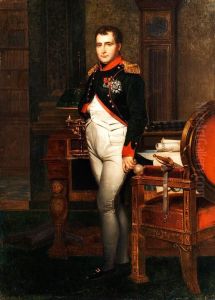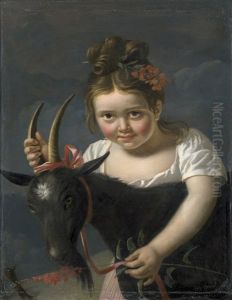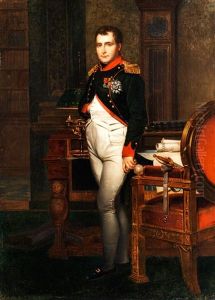Jean Benjamin Houel Paintings
Jean-Benjamin Houel was a French painter, engraver, and architect born on June 16, 1735, in Rouen, France. Not to be confused with later artists who bore similar names, Houel is most noted for his landscapes and vedute, which are detailed paintings, drawings, or engravings depicting city scenes or other vistas. His works often reflect the Enlightenment interest in science, exploration, and the documentation of the natural and built environments.
Houel received his artistic training in Paris, where his talents developed under the guidance of established masters. During the 1760s, Houel began to gain recognition for his work. He traveled extensively throughout Europe, particularly in Italy, where he spent a significant amount of time in Rome and Sicily. The landscapes and ancient ruins of these regions greatly inspired his artistic vision, and he created numerous works capturing their beauty and historical significance.
In addition to his artistic pursuits, Houel was also interested in the scientific and archaeological aspects of the sites he visited. His travels led to the publication of a four-volume work titled 'Voyage pittoresque des isles de Sicile, de Malte et de Lipari' (Picturesque Voyage to the Islands of Sicily, Malta, and Lipari), which he produced between 1782 and 1787. This collection of writings and illustrations was an important contribution to the knowledge of the region's archaeology and natural history at the time.
Houel's work exhibited a keen attention to detail and a commitment to accurately depicting the subjects of his landscapes and architectural studies. This approach made him a valuable figure in the circles of both art and science, as his work served as a reliable record of the places he depicted. His legacy is one that bridges the gap between art and documentary, providing a window into the 18th-century European world.
Jean-Benjamin Houel passed away on November 14, 1813, in Paris. Despite not being as widely recognized as some of his contemporaries, his works remain an important part of European art history, especially in the context of the Grand Tour—a period when European aristocrats and scholars would travel through the continent to study classical art and culture. Houel's oeuvre provides an insightful look into the environments and perspectives of his time, and his contributions to the documentation of historical and cultural sites continue to be appreciated by art historians and enthusiasts.


